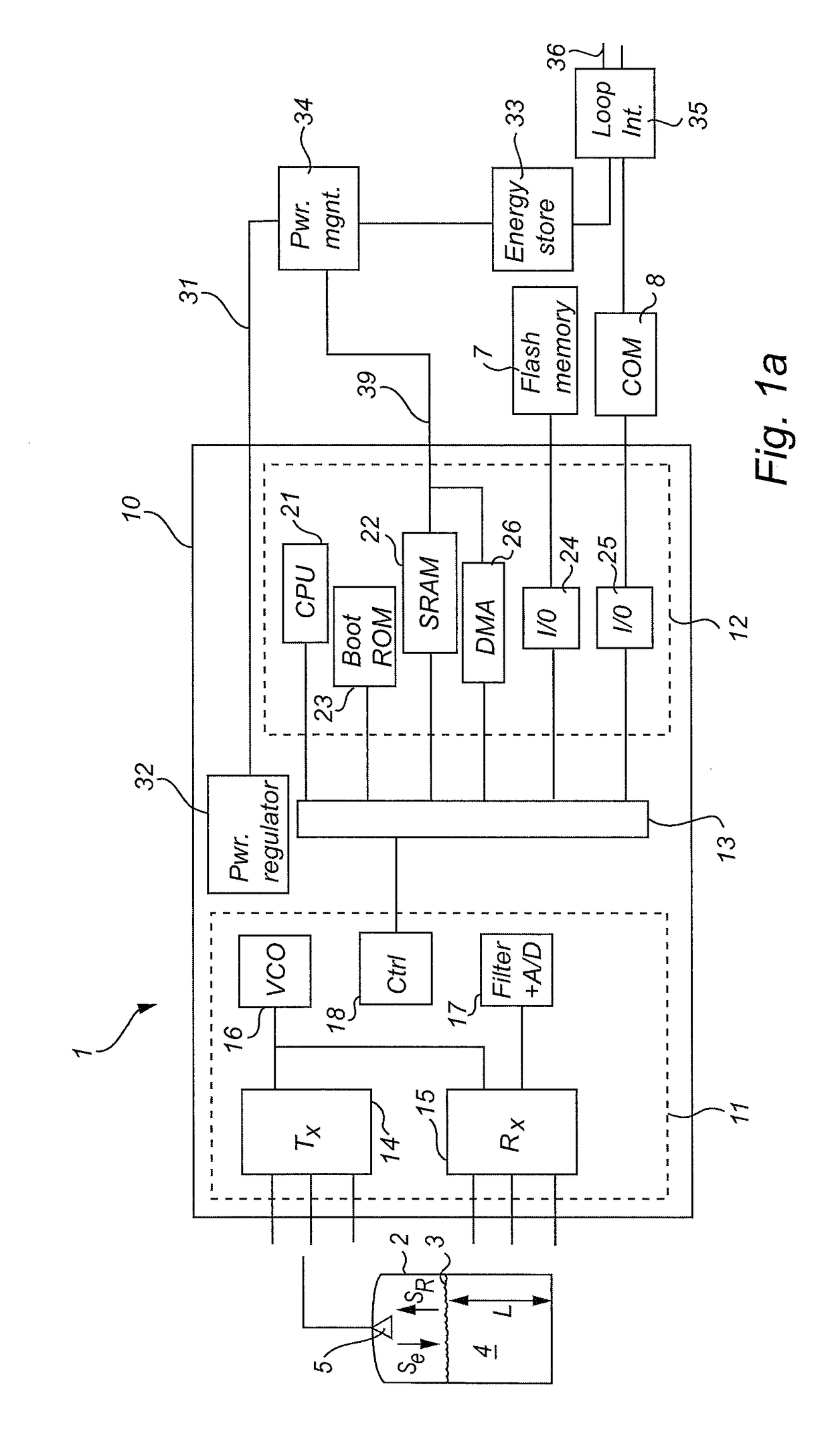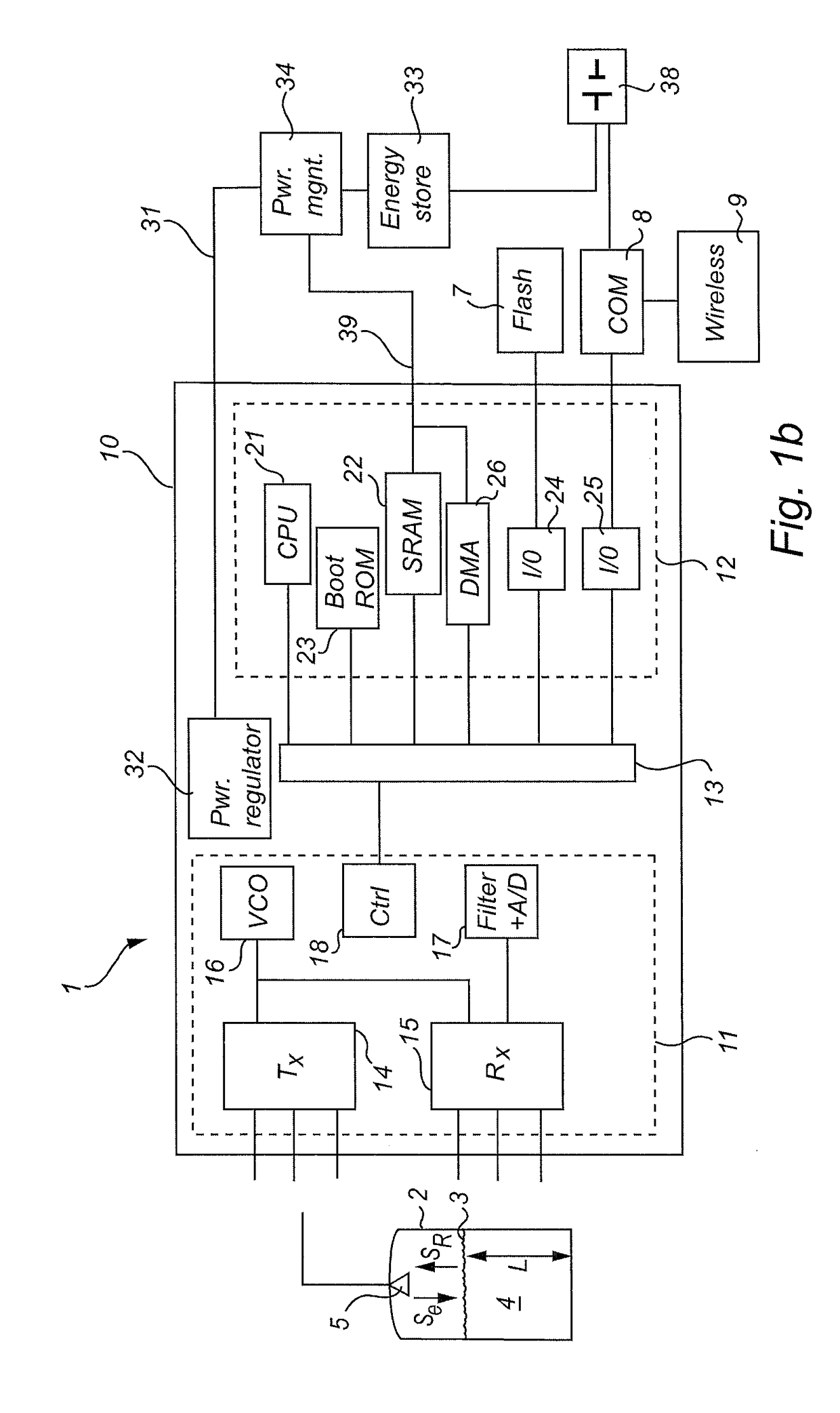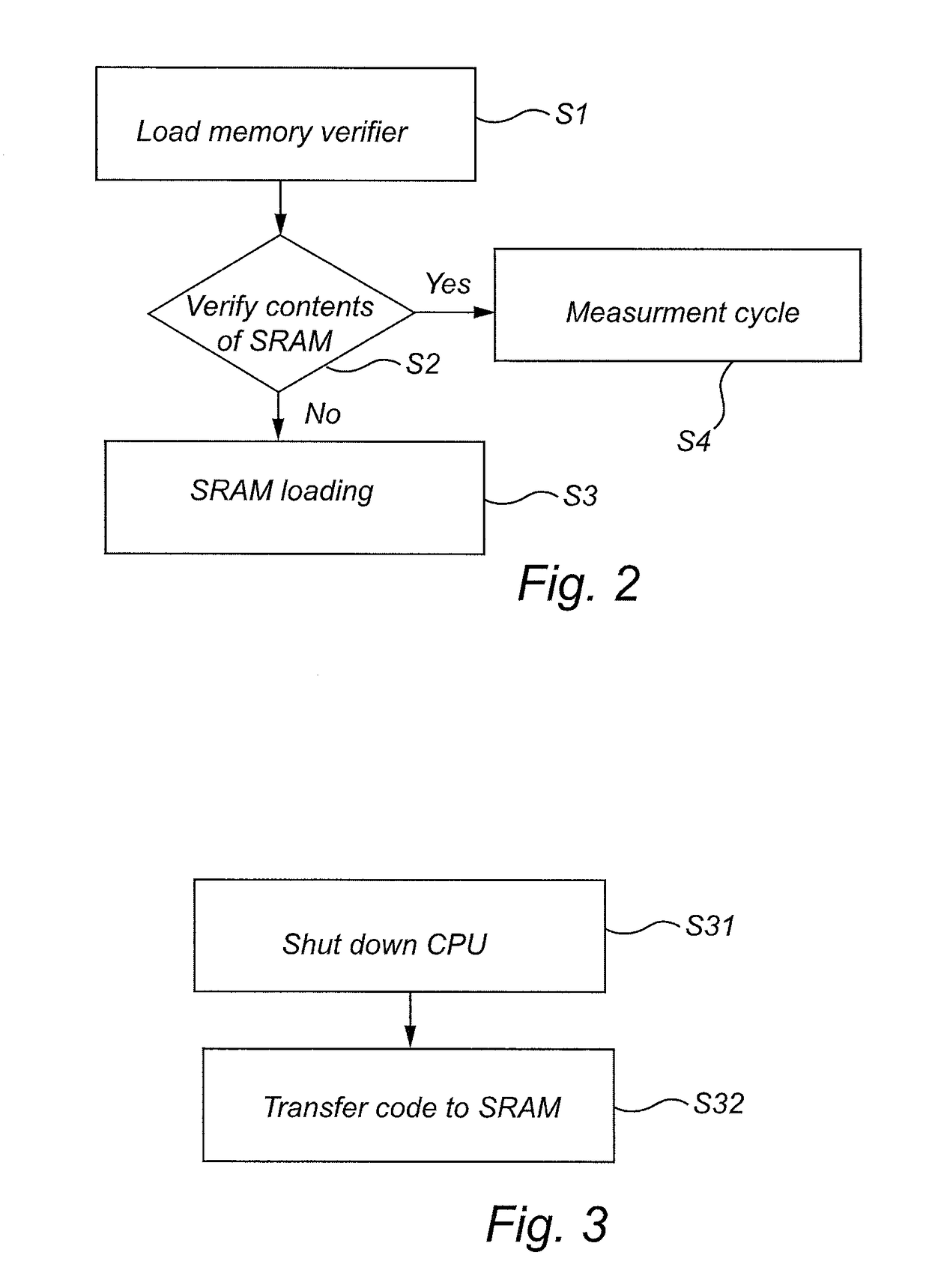Radar level gauge
- Summary
- Abstract
- Description
- Claims
- Application Information
AI Technical Summary
Benefits of technology
Problems solved by technology
Method used
Image
Examples
Embodiment Construction
[0034]FIGS. 1a and 1b show very schematically a radar level gauge (RLG) 1 which can be mounted on the roof of a tank 2 in order to measure a distance to a surface 3 of a product 4 kept in the tank. The distance can be used to determine a process variable, such as the filling level L of the tank.
[0035]The RLG 1 has a signal propagation device, here a directional antenna 5, arranged to emit a transmit signal ST into the tank 2 and to receive a reflected signal SR from the tank. The antenna 5 is connected to a radar unit 10, including transceiver circuitry 11 and processing circuitry 12. Further details of the radar unit 10 will be further discussed below. The radar unit 10 is connected to a non-volatile memory, such as a flash memory, 7, and to communication circuitry 8.
[0036]In order to communicate the detected process variable outside the RLG 1, the communication circuitry 8 may be connected to a two-wire control loop 37, typically a two-wire 4-20 mA control loop, via a two-wire int...
PUM
 Login to View More
Login to View More Abstract
Description
Claims
Application Information
 Login to View More
Login to View More - R&D
- Intellectual Property
- Life Sciences
- Materials
- Tech Scout
- Unparalleled Data Quality
- Higher Quality Content
- 60% Fewer Hallucinations
Browse by: Latest US Patents, China's latest patents, Technical Efficacy Thesaurus, Application Domain, Technology Topic, Popular Technical Reports.
© 2025 PatSnap. All rights reserved.Legal|Privacy policy|Modern Slavery Act Transparency Statement|Sitemap|About US| Contact US: help@patsnap.com



